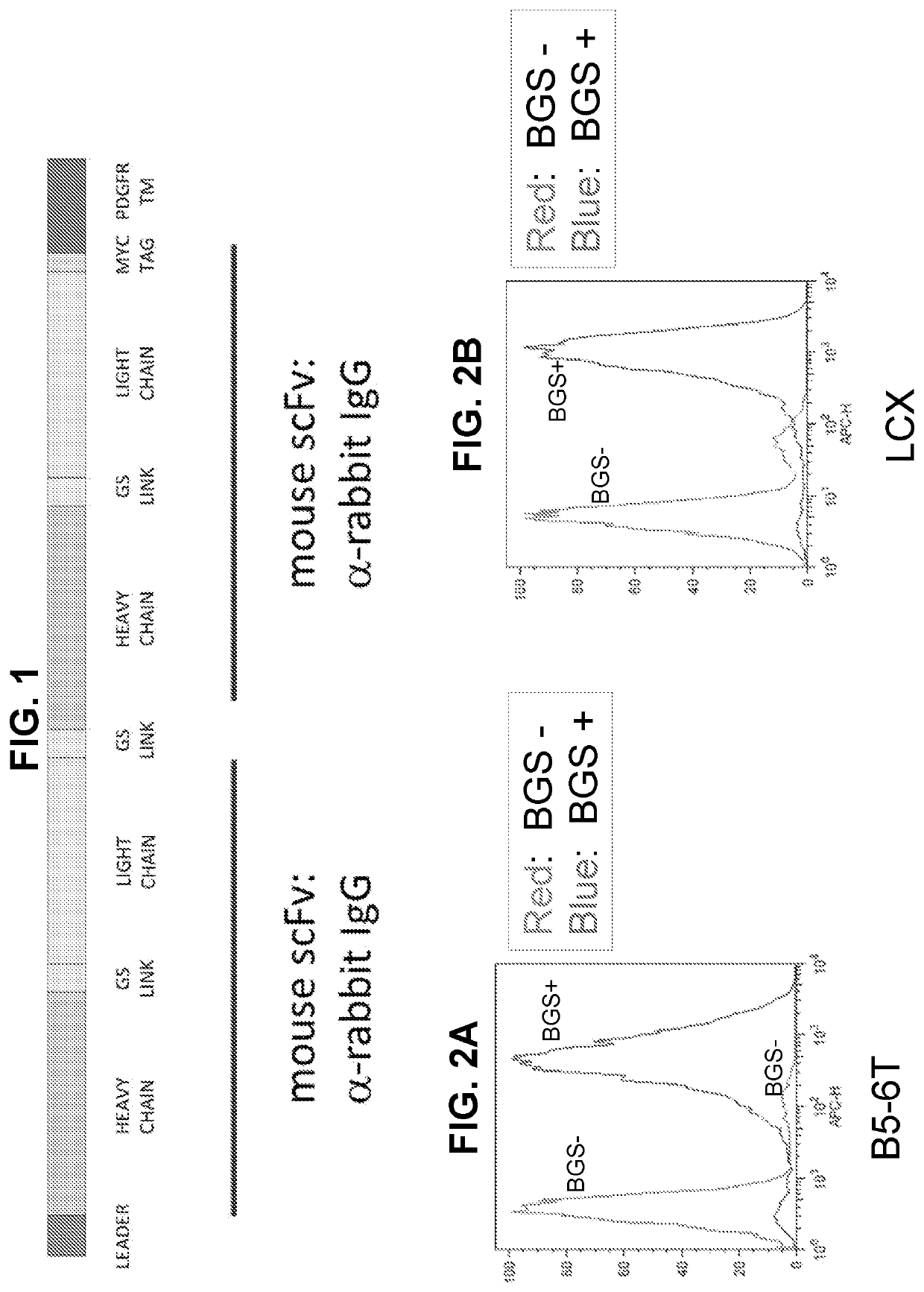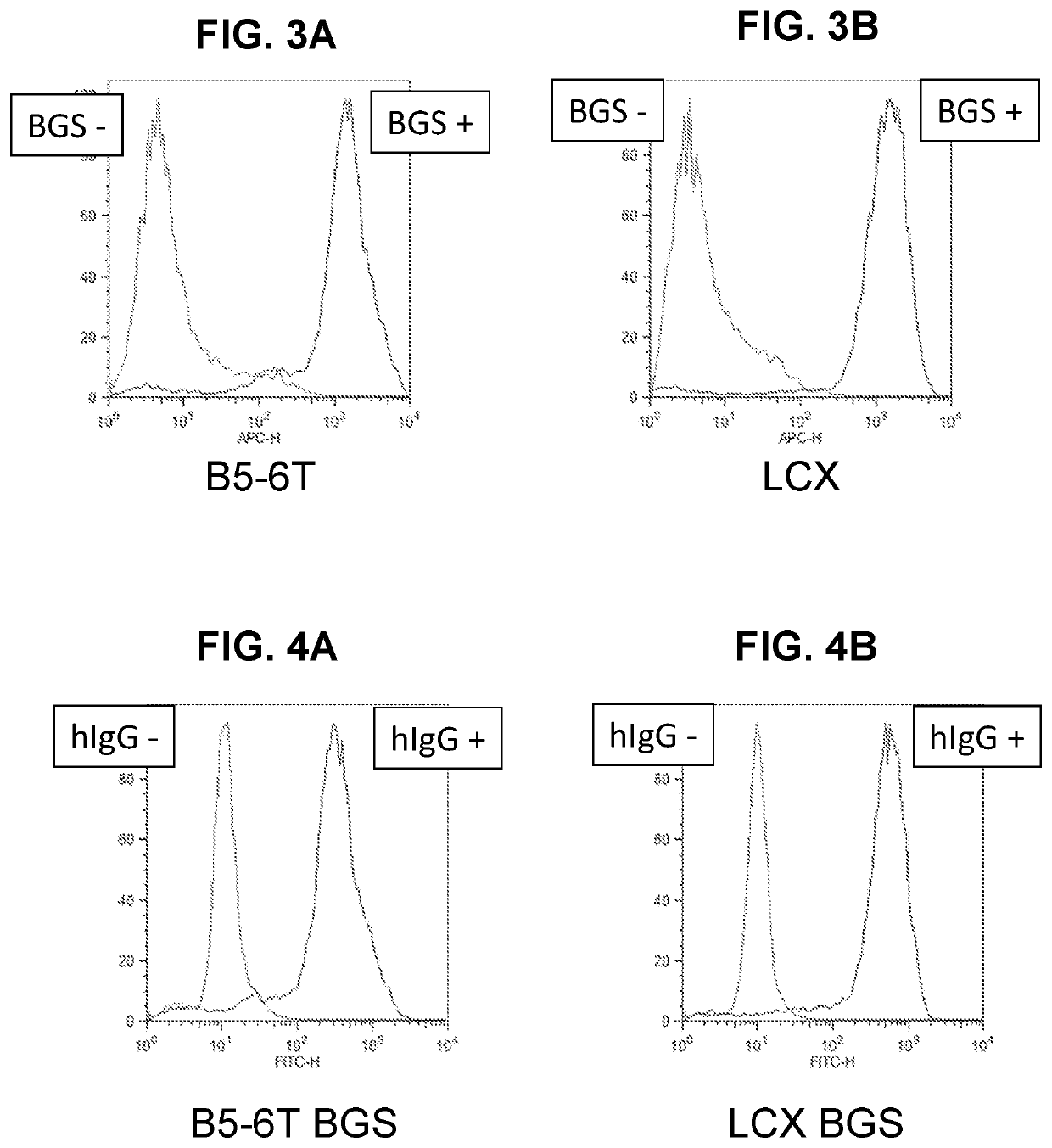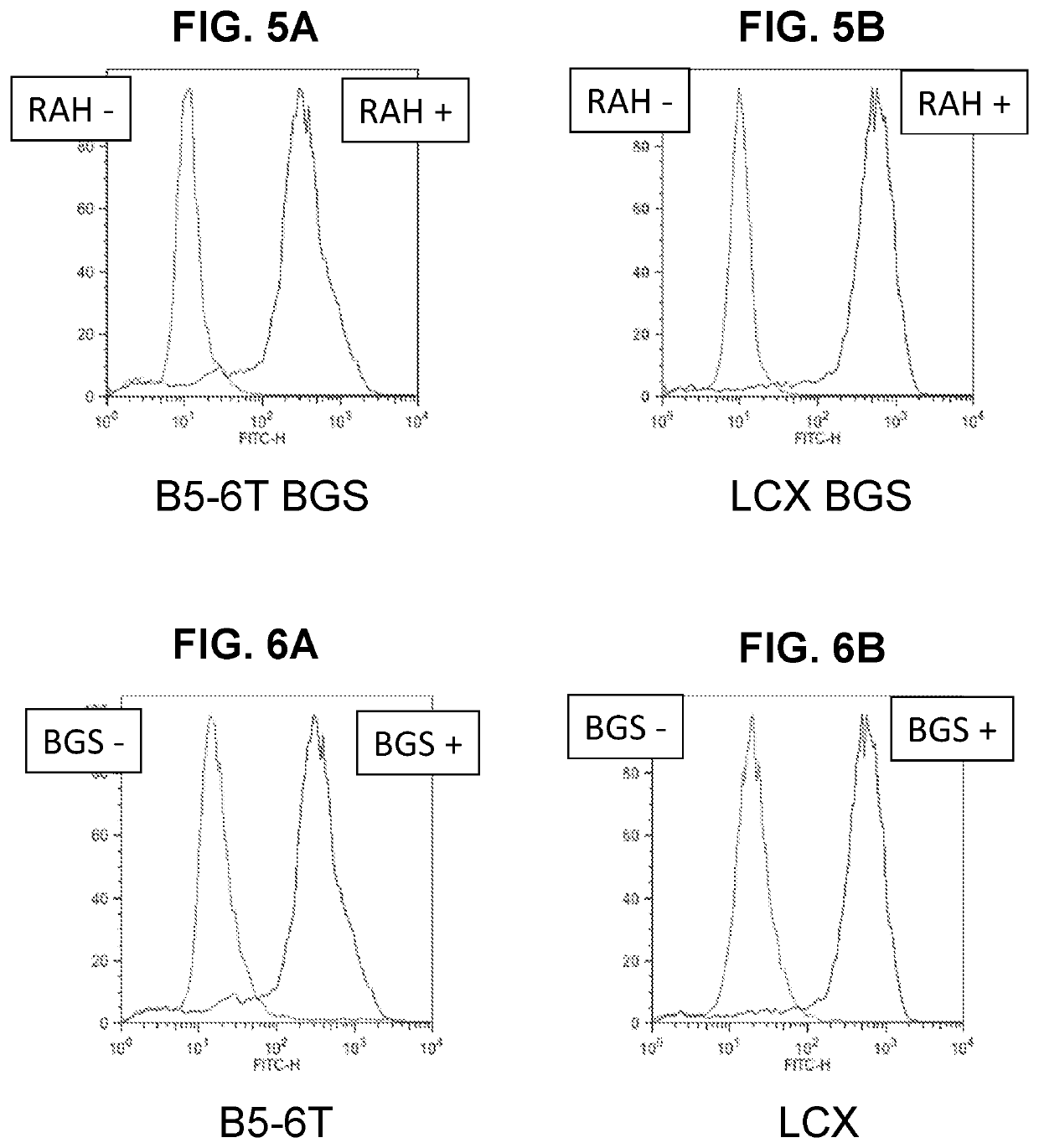Methods and compositions for inducible extracellular membrane capture of monoclonal immunoglobulins secreted by hybridomas
- Summary
- Abstract
- Description
- Claims
- Application Information
AI Technical Summary
Benefits of technology
Problems solved by technology
Method used
Image
Examples
example 1
n of Nucleic Acid Molecule Encoding an Anchor
[0191]A nucleic acid molecule encoding an Anchor is constructed using the following elements in the table below. Briefly, a nucleic acid sequence encoding a variable domain of murine anti-rabbit antibody heavy chain (VH) was linked to a variable domain of the antibody light chain (VL) via a spacer encoding (Gly4Ser)3, resulting in a sequence encoding single chain variable fragment (scFv). Further, two nucleic acid sequences encoding scFv were linked together by a spacer described above and resulted in a tandem scFv coding sequence. Additional sequences in the nucleic acid molecule included a sequence encoding an N-terminal leader sequence (AKA, a signal peptide) from a kappa light chain immunoglobulin protein to ensure the expression of scFv on the cell surface. The sequence is provided in the NCBI database under NCBI Reference Sequence: XP_003753129.1 (Ig kappa chain V-III region MOPC 63 isoform X2; species Rattus norvegicus). Additional...
example 2
ment of the LCX Fusion Partner Cell Line
[0192]Signaling from ectopic expression of IL-6 is critical for stable secretion of human immunoglobulins by hybridomas that also express hTERT. Optimization and standardization of hybridoma protocols therefore require that IL-6-stimulatory activity of individual cells in a bulk cell population be efficiently assessable in real time. Yet, the secretion rates of IL-6 by individual cells in a polyclonal population is difficult to measure. The LCX cell line was created to express ectopic hTERT and to provide IL-6 signaling activity which can be monitored by assessing surface expression of a molecule that transduces an IL-6-like signal. Parental K6H6 / B5 cells were modified to express hTERT in addition to the gp130 ΔYY protein (a constitutively active member of the IL-6 receptor family) by retroviral transduction and RT-PCR was performed to confirm the expression of the ectopic hTERT gene in LCX cells (see FIG. 14) as described.13
[0193]Conventiona...
example 3
ment of Stable Hybridomas Secreting Human Monoclonal Antibodies with Potent Poliovirus Neutralizing Activity
[0195]The LCX cell line was used to generate hybridomas that stably secreting human Ig following fusion with primary human B cells. Following protocols standardized with the use of the B5-6T fusion partner cell line, we fused the LCX cell line to B cells from an individual immune to poliovirus (PV) (types 1-3) according to protocols described.20 This created a population of hybridoma secreting human that were assessed for the expression of human IgG immunoreactive with poliovirus. The hybridoma supernatants were assessed by ELISA, enabling the identification and subcloning of hybridomas that stably secrete human mAbs capable of PV binding. The PV-reactive mAbs were tested for neutralization in vitro using the microneutralization tests listed in Table 2. Many mAbs were identified to have high neutralization potency (such as LX-2D6, LX_5G5, LX_4A4, LX_3E9, LX_1A7, LX_1006 and LX...
PUM
| Property | Measurement | Unit |
|---|---|---|
| diameter | aaaaa | aaaaa |
| binding affinity | aaaaa | aaaaa |
| frequency | aaaaa | aaaaa |
Abstract
Description
Claims
Application Information
 Login to View More
Login to View More - R&D
- Intellectual Property
- Life Sciences
- Materials
- Tech Scout
- Unparalleled Data Quality
- Higher Quality Content
- 60% Fewer Hallucinations
Browse by: Latest US Patents, China's latest patents, Technical Efficacy Thesaurus, Application Domain, Technology Topic, Popular Technical Reports.
© 2025 PatSnap. All rights reserved.Legal|Privacy policy|Modern Slavery Act Transparency Statement|Sitemap|About US| Contact US: help@patsnap.com



